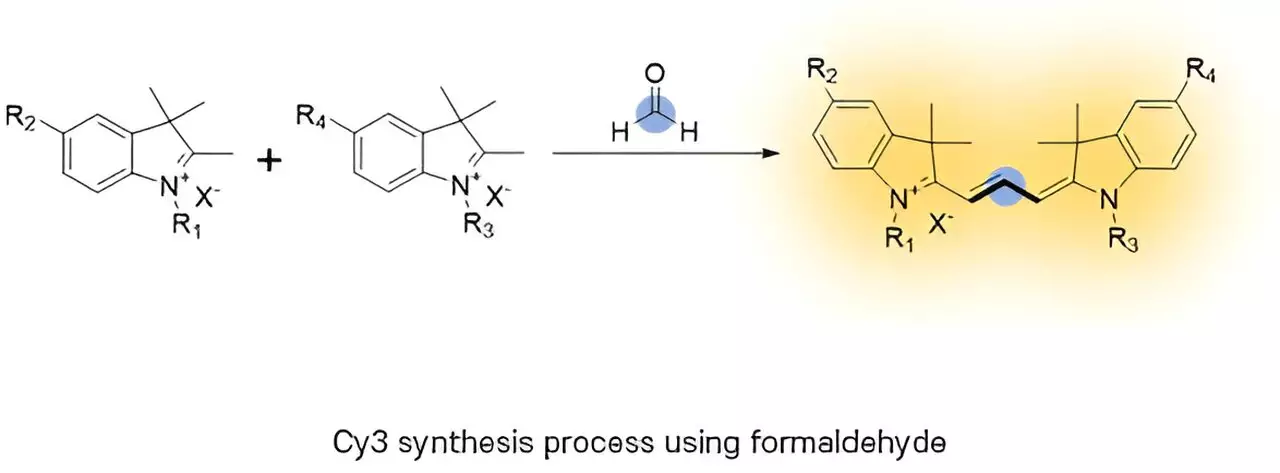Recent advancements in organic chemistry have taken a fresh turn, particularly with the synthesis of organic fluorophores. A dedicated research team has made significant strides in developing a cost-effective and atom-efficient method for synthesizing these vital compounds. Their groundbreaking findings, which were prominently featured in *Angewandte Chemie International Edition*, focus on the use of formaldehyde, the simplest carbon molecule consisting of a single carbon atom, two hydrogen atoms, and one oxygen atom. This innovative approach promises to revolutionize the way we synthesize organic fluorophores, which are crucial in various applications ranging from medical diagnostics to advanced bioimaging techniques.
Historically, the synthesis of fluorophores such as trimethine cyanine (Cy3) has posed numerous challenges due to its reliance on complex compounds with high molecular weights. This traditional method often results in the generation of a myriad of byproducts and suffers from low atom efficiency—an issue that has burdened researchers and limited the practicality of these compounds in real-world applications. The complexity of these procedures not only increases costs but also hinders scalability in production, making the search for more efficient methodologies imperative.
In a significant departure from conventional synthesis techniques, the research team strategically employed formaldehyde in their method. By harnessing this simple yet versatile molecule, they successfully introduced carbon into the synthesis chain of Cy3, which is a crucial step in the molecular construction process. This shift not only minimized the molecular complexity involved but also maximized atomic efficiency, drastically improving the overall synthesis process while simultaneously reducing waste.
Furthermore, the research team transformed what was typically a multi-step asymmetric synthesis into a streamlined one-pot reaction. This innovation eliminated unnecessary stages, thus enhancing synthetic efficiency and making the production of Cy3 much more viable for largescale applications.
The implications of this innovative synthesis technique extend beyond laboratory settings. The researchers investigated its application in living tissues, considering the natural occurrence of formaldehyde production during metabolic processes. Their exploration included analysis of rat small intestine tissue, revealing that inflammation-induced fluctuations in formaldehyde levels correlated with a weaker fluorescence signal. This offered insights into how environmental factors could influence the effectiveness of Cy3 in biological systems, paving the way for further research into its potential in medical sciences.
Under the guidance of Professor Young-Tae Chang and Dr. Sun Hyeok Lee from the Basic Science Research Institute of POSTECH, this pioneering work not only demonstrates the effective application of formaldehyde in organic synthesis but also opens new avenues for future research. With the successful synthesis of Cy3 molecules using this method, the stage is set for enhanced applications in diagnostics and therapeutics, showcasing a promising intersection of chemistry and medicine. As researchers continue to explore and refine these techniques, the future of organic fluorophore synthesis looks more efficient and accessible than ever before.

